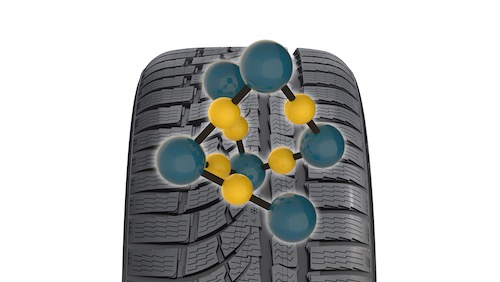Winters have a combination of slippery surfaces that all can cause problems when you drive. You have ice, which is very difficult to generate grip on. This is why you often have studded tires in areas that has a lot of ice. Then you have snow, which is the cause that they launched snow tires, where you need to create grip and prevent the snow to get stuck in the tread and finally slush, which can cause dangerous slushplaning where you lose control over your vehicle.
You don’t need the combination of these, one of them is enough to cause problems when you drive. To combat these conditions, you do need tires that are approved for winter conditions. This means that you can use winter approved all-weather tires or winter tires, but not all-season tires as they aren’t approved for winter use. The challenge you have with all-season tires is that they are basically summer tires that are optimized for warm weather and not for cold weather and weather conditions like snow, ice and snow. This means that the rubber compound will not have the needed additives to ensure that the tires will remain soft and agile at low temperatures.
All-season tires will allow you to use your vehicle in all the seasons that are warm. For the areas that really don’t have winter conditions, then you can of course use them all-year round. There is then no need to worry about winter tires, unless you would get a surprise snow storm or you will travel to another part of the country that might have snow.
When you keep one set of tires on your vehicle for the whole year, tire rotation becomes very important. This is because the wear will be different between the front and the rear tires. This has to do because of extra friction due to curve taking, due to weight distribution, front or rear when drive. Having an electric car will also increase the wear, due to higher torque plus you also have the extra weight due to heavy battery packs, so electric cars and hybrids are known for having higher wear and will most likely require more frequent tire rotations than you might be used to.
To know when to rotate your tires, you should measure the tread depth. There are two numbers that you should remember. If the tread depth is below 5/32 inches it is time to change the tires to a new set. If you have a difference of more than 5/64 inches then it is time to change place between the front pair with the rear tires. This should be checked on a regular basis and more often if you drive an electric car or hybrid. In addition to tread depth, also check the tire pressure and check that the tires are free from any external damages,
For more information regarding tires that can be used during the winter, visit: www.nokiantires.com
